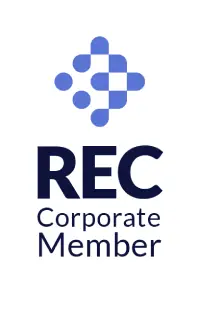It is becoming less severe for the healthcare industry’s financial stability in 2022 to be severely impacted by endemic COVID-19, inflation, and labor difficulties. Healthcare payers have recently acted, but the majority of the improvement is the consequence of transformation efforts made by healthcare delivery companies over the past year or two. Still, when compared to pre pandemic levels, health-system margins are underperforming financially. Long-term care profit pools and skilled nursing are still declining. Eligibility redeterminations have negatively impacted the Medicaid payers’ financial performance in a robust job market. The payer side of individual segment economics and Medicare Advantage, however, has held up fairly well.
Looking ahead to 2027, one of the biggest opportunities for payers is the increase in the population of managed care duals or those who are eligible for both Medicare and Medicaid. As transformation efforts, M&A, and revenue diversification pay off, financial performance on the healthcare delivery side will keep improving. Driven by technological adoption, firms in the pharmaceutical services industry, especially those specializing in specialty pharmacy, will also continue to grow, as will enterprises in the healthcare services and technology (HST) sector, particularly those who provide quantifiable near-term advantages for their clients.
The acute strains from labor shortages, inflation, and the endemic nature of COVID-19 have catalyzed the industry toward recovery and innovation, with a focus on enhancing financial health and operational efficiency. Here’s a comprehensive forecast of what to expect. Let’s dive deep into it.
Financial Recovery and Strategic Transformation
Despite the easing strain from previous challenges, health system margins remain below pre-pandemic levels. Transformation efforts, mergers and acquisitions, and revenue diversification are expected to continue driving financial performance improvements. Managed care for dual-eligible individuals (Medicare and Medicaid) presents significant opportunities for payers, reflecting a trend toward integrated care models.
Additional Read: Nursing Jobs in the UK for Indian Nurses
Growth Segments and Profit Pools
At a blended annual growth rate of 7% CAGR, healthcare profit pools are projected to rise from $583 billion in 2022 to $819 billion in 2027. Key growth areas include Medicare Advantage, outpatient care settings, healthcare services and technology (HST), and specialty pharmacy services. These segments are leveraging shifts in care delivery, technological advancements, and demographic changes to drive growth.
Value-Based Care Expansion
The push towards value-based care (VBC) models is expected to accelerate, with an estimated 90 million lives under VBC by 2027. This expansion reflects broader adoption across commercial payers, Medicare Advantage, and specific specialty areas, driving improvements in cost and quality outcomes.
Payer Dynamics and Government Programs
Government healthcare segments, particularly Medicare Advantage and managed care for dual-eligible populations, are projected to see significant growth, outpacing commercial segments. This shift is indicative of broader changes in payer mix and enrollment dynamics, with implications for both profit pools and care delivery models.
Technological Innovation and Efficiency
The healthcare sector is embracing technology to address challenges and improve efficiency. The HST sector, including software, platforms, and data analytics, is forecasted to be the fastest-growing segment. These technologies facilitate process improvements, cost reductions, and enhanced patient engagement.
Pharmacy Services Evolution
The pharmacy services sector is undergoing rapid changes, with specialty pharmacies and broad-population drugs at the forefront. Legislative initiatives that prioritize cost containment and patient affordability, such as the Inflation Reduction Act and the changing drug pipeline, are influencing care paradigms and finance approaches.
To know more, read this: Which Country Is Best For A Nursing Job?
Wrapping Up
The US healthcare industry is navigating through a period of significant transformation driven by demographic shifts, technological advancements, and evolving care models. These developments have the potential to drastically alter the environment of patient care, healthcare financing, and delivery by this year and beyond. They also present opportunities and problems.
In conclusion, the future of healthcare in the US looks promising, but it also presents numerous challenges. Thanks to the adoption of new technologies, rising healthcare costs, and an aging population, the need for qualified individuals in the field has never been higher. That’s where we at Dynamic Health Staff come in – our services can help bridge the gap between healthcare organizations and qualified professionals, ensuring that patients receive the best possible care.
We can assist healthcare organizations in staying ahead of the curve and adjusting to the shifting demands of the market by offering healthcare recruitment services. It is obvious that as time goes on, healthcare recruiters like us will be more and more influential in determining how US healthcare develops. If you want to know more about our services, contact us today at +919810017608 or enquiry@dynamichealthstaff.com. We’ll assist you in every step of the way!






